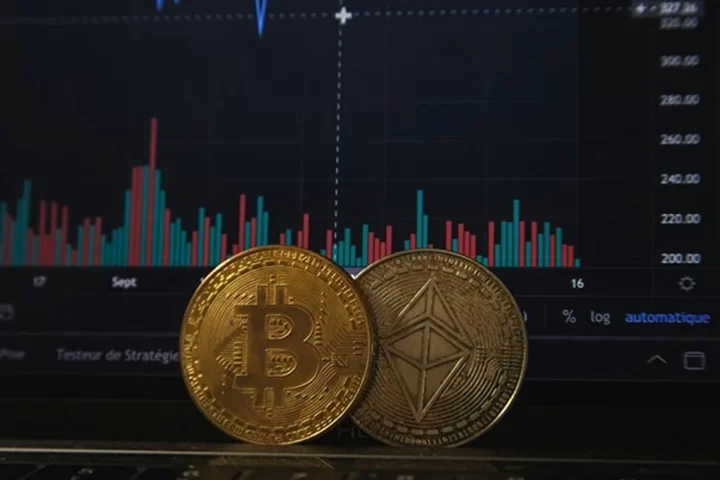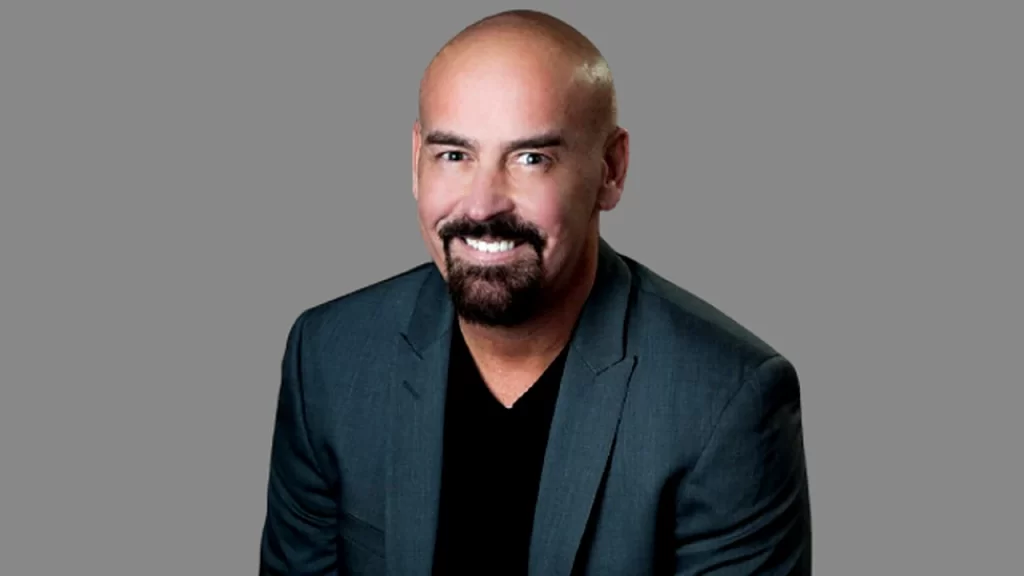U.S. stock markets rallied on Wednesday as optimism grew over a potential resolution to the government shutdown, while Bitcoin retreated from recent highs.
The Dow Jones Industrial Average rose by 423 points, or 0.9%, reaching a new intraday high as investors awaited a House vote on a bill to end the 40-day government closure.
Stocks Surge as Confidence Returns
Strong performances from banking giants such as Goldman Sachs, JPMorgan Chase, and American Express fueled the rally.
The S&P 500 inched up 0.1%, while the Nasdaq Composite slipped 0.3%, showing slight weakness in tech shares.
Meanwhile, gold climbed to around $4,180 and silver rose above $53, boosted by safe-haven demand and expectations of resumed government data releases once the shutdown ends.
Investors seemed to rotate back into equities and commodities with clearer ties to fiscal policy and credit conditions.
Bitcoin Pulls Back
Bitcoin dropped 3.4%, falling from an intraday high of $105,300 to a weekly low near $101,200.
The decline came as investors shifted capital toward traditional assets, signaling a temporary cooling of crypto enthusiasm following a strong rally earlier in the week.
The move reflects a broader recalibration in risk appetite.
As the threat of a prolonged shutdown fades, market participants appear more comfortable positioning around traditional investments rather than digital assets.
ETF Inflows Suggest Long-Term Optimism
Despite short-term weakness, Bitcoin’s long-term outlook remains supported by institutional interest.
Spot Bitcoin exchange-traded funds recorded $524 million in cumulative net inflows on Tuesday — the highest daily total since early October.
The renewed ETF activity suggests that investors are gradually rebuilding exposure to Bitcoin after the volatility seen earlier this month.
With the Federal Reserve expected to provide new policy guidance later this month, any hint of a dovish stance could reignite demand for risk assets, including cryptocurrencies.
If market volatility stabilizes and government operations resume smoothly, Bitcoin may regain upward momentum as investors seek diversification beyond equities.
Crypto advocate and attorney John Deaton has announced his second campaign for the U.S. Senate in Massachusetts, setting up another potential face-off with Democratic incumbent Ed Markey in 2026.
At an event in Worcester on Monday, Deaton declared his candidacy, saying in a campaign video, “I’m winning this time.”
Deaton previously ran as the Republican challenger against Senator Elizabeth Warren in 2024, losing by approximately 700,000 votes.
Focus Shifts Beyond Crypto Policy
While his latest announcement did not focus heavily on digital asset regulation, Deaton’s name remains closely tied to the crypto world.
He gained prominence representing XRP holders in Ripple’s long-running legal battle against the U.S. Securities and Exchange Commission (SEC).
Deaton confirmed that he would again run as a Republican to unseat Markey, who has been a vocal critic of cryptocurrency mining and voted against the GENIUS stablecoin bill.
Political Landscape and Early Challenges
Massachusetts remains a Democratic stronghold, and Deaton’s path to victory may face significant hurdles.
Representative Seth Moulton, a Democrat from Massachusetts’s 6th Congressional District, has already emerged as a potential contender for the Senate seat.
Markey, now 79, has held the position since 2013 and continues to attract strong support among Democratic voters.
Crypto Community Backs Deaton’s Effort
Despite the uphill battle, Deaton retains a loyal base within the crypto community.
“We’re never going to not be excited about someone advocating for [crypto] policy,” said Mason Lynaugh, community director at Stand With Crypto. “He’s going to have his own voters he’s going to cultivate that are very excited to see someone like him saying these types of things publicly.”
During his 2024 campaign, Deaton raised over $360,000 in the first quarter alone, with major contributions from executives at Ripple, Gemini, and Kraken.
As the 2026 race begins to take shape, Deaton is expected to continue leveraging his national profile and support among crypto advocates to challenge the Democratic establishment.
BitMine Immersion Technologies continues its aggressive Ethereum accumulation, purchasing 110,288 ETH last week, a 34% increase from the prior week.
The acquisition brings BitMine’s total Ether holdings to 3,505,723 tokens at an average price of $3,639 per token.
BitMine chairman Tom Lee highlighted the opportunity presented by recent Ether price dips.
“To me, it is evident that Wall Street is very interested in tokenizing assets onto the blockchain, creating greater transparency and unlocking new value for issuers and investors.
This is the key fundamental story and supports our view that Ethereum is a super cycle story over the next decade,” Lee said.
Originally a cryptocurrency mining firm, BitMine has evolved into the largest Ethereum treasury company.
The firm’s ETH holdings are now valued at around $12.5 billion, representing approximately 2.9% of the total 120,696,594 ETH supply.
BitMine has set a long-term goal of acquiring 5% of all Ethereum tokens.
Lee, who is also co-founder of financial research firm Fundstrat, remains highly bullish on ETH’s potential.
In mid-October, he forecasted Ether could reach between $10,000 and $12,000 by the end of 2025.
At the time of writing, ETH trades at $3,561, down 13.4% over the past two weeks and 4.7% in the past month.
This means BitMine’s treasury is currently in a paper loss, requiring a roughly 180% increase in price to reach Lee’s $10,000 target by year-end.
Meanwhile, BitMine’s stock, BMNR, has surged over 400% in 2025, trading at $41.15.
The company’s continued buying signals confidence in Ethereum’s long-term adoption and market positioning.
Trump Media and Technology Group reported a net loss of $54.8 million in the third quarter, up from $19.3 million the same time last year.
The company operates the Truth Social social media platform and saw revenues decline to $972,900 from over $1 million a year ago.
Shares ended trading down 1.73% at $13.10 and rose slightly after hours to $13.20.
Crypto Holdings and Strategy
Trump Media held 11,542 Bitcoin as of September 30.
The company first began buying Bitcoin in late July and has indicated plans to acquire more, alongside exploring other cryptocurrencies.
Bitcoin holdings generated $15.3 million of realised income from options investments.
Additionally, the company posted $33 million in unrealised gains from holding Cronos tokens.
The company said it acquired Bitcoin as part of an investment strategy launched in May after raising $1.5 billion from stock sales and $1 billion from bonds.
Expansion and Treasury Moves
CEO Devin Nunes stated the quarter was crucial to Trump Media’s expansion plans.
He said the company has “secured our financial future with a massive Bitcoin treasury, and expanded our existing platforms.”
The company also formed Trump Media Group CRO Strategy, a digital asset treasury company aimed at buying up to $1 billion in Cronos tokens, representing over 6.3 trillion units.
“With these financial assets now earning income, alongside our second consecutive quarter of positive operating cash flow, we’re well-poised to act on our mergers and acquisitions strategy,” Nunes said.
Financial Assets and Stock Challenges
Trump Media’s financial assets grew from $274 million in March 2024 to $3.1 billion as of September 30.
Despite this, the company’s stock has struggled, losing 61% year-to-date.
The large cryptocurrency holdings have provided income, but the operating business continues to face pressure.
Bitcoin hovered around $102,000 on Thursday, as traders struggled to push the price beyond the $105,000 resistance level amid rising sell pressure.
Selling Pressure Builds Around $105,000
Data from Cointelegraph Markets Pro and TradingView showed Bitcoin’s rebound losing steam following the daily open.
Analyst Skew noted that Bitcoin’s price appeared capped by a cluster of sell orders just above $105,000, adding that this was “not surprising.”
He warned that the increase in sell-side liquidity could be a deliberate attempt to suppress prices during Asian trading hours.
Trading analytics platform Material Indicators highlighted that the significant ask liquidity had not yet caused a price correction, suggesting the seller could be trying to drive Bitcoin down toward the $98,000 to $93,000 range.
“If price hits $105k, I’d expect part if not all of those asks to get pulled,” the group said, noting that Bitcoin’s bounce from its 50-week simple moving average still carries “macro bullish implications.”
Traders Eye Potential Dip
Market commentator Exitpump described the $105,000 sell wall as “insane,” while other analysts suggested the liquidity might not be genuine.
Meanwhile, veteran investor Kyle Chasse cautioned that another short-term price drop could occur, pointing to a buildup of bid liquidity below current levels.
“Confidence could get wiped in a heartbeat,” he said, referencing CoinGlass data showing clusters of liquidations awaiting lower price zones.
External Market Factors at Play
Bitcoin’s latest movements also coincided with cooling momentum in U.S. equities, which have been retreating from all-time highs.
Speculation around the Supreme Court possibly overturning international trade tariffs added uncertainty to broader markets.
Analysts believe that if the Court strikes down the tariffs, it could trigger a rally in equities — but potentially divert short-term liquidity away from Bitcoin.
As of Thursday afternoon, Bitcoin remained volatile, trading narrowly between $101,500 and $103,500, with traders keeping a close watch on the critical $105,000 resistance zone.
Spot Bitcoin and Ether exchange-traded funds (ETFs) extended their losing streak on Tuesday, posting their fifth straight day of outflows amid broader market uncertainty.
Data from Farside Investors showed that spot Bitcoin ETFs recorded $578 million in net outflows — the steepest daily withdrawal since mid-October.
BlackRock’s iShares Bitcoin Trust (IBIT) and Fidelity’s FBTC led the exodus, signaling a pause in institutional accumulation.
Ether ETFs saw similar pressure, with $219 million in redemptions. Fidelity’s FETH and BlackRock’s ETHA were hit hardest, pushing total Ether ETF outflows close to $1 billion since late October.
Solana Defies Trend With Six Days of Inflows
While Bitcoin and Ether funds struggled, Solana-based ETFs continued to attract capital.
Spot Solana ETFs logged $14.83 million in net inflows on Tuesday — their sixth consecutive day of gains.
Bitwise’s BSOL and Grayscale’s GSOL led the charge, suggesting that investors are rotating toward newer, yield-generating assets despite the risk-off environment.
Institutions Reduce Exposure Amid Macro Uncertainty
Vincent Liu, chief investment officer at Kronos Research, told Cointelegraph the outflows are more about macroeconomic stress than fading belief in crypto.
“Straight days of redemptions show institutions are trimming risk as leverage unwinds and macro jitters rise,” Liu said. “Until liquidity conditions stabilize, capital rotation will keep the ETF bleed alive.”
He added that a stronger U.S. dollar and tightening liquidity have triggered broad risk aversion.
Solana’s Story Gains Momentum
Liu noted that Solana’s continued inflows represent a mix of curiosity and opportunity.
“Solana’s strength is partly fresh flow meets fresh story, a new ETF with yield appeal pulling in curious capital,” he explained. “Its speed, staking, and story keep momentum tilted upward.”
However, Liu warned that Solana’s growth remains niche. “It’s a narrative-driven move by early adopters chasing yield and growth. The broader market is still in risk-off mode,” he cautioned.
Cathie Wood’s ARK Invest has expanded its investment in Bullish, the digital asset exchange that recently made its public debut on the New York Stock Exchange under the ticker BLSH.
According to trade disclosures filed Friday, ARK Innovation ETF (ARKK) purchased 72,537 Bullish shares, ARK Next Generation Internet ETF (ARKW) acquired 21,354 shares, and ARK Fintech Innovation ETF (ARKF) bought an additional 11,122 shares.
The combined purchases amount to over $5 million in new exposure to Bullish, further strengthening ARK’s position in the exchange. This move follows an earlier $8.27 million investment made in mid-October across ARK’s funds.
Since Bullish’s $1.1 billion listing, ARK has accumulated roughly $172 million worth of shares across multiple ETFs, underscoring its growing confidence in the platform’s long-term potential.
Bullish Shares Rebound After Market Volatility
Bullish stock closed at $50.57 on Friday, marking a 1.24% increase and a recovery from recent market turbulence.
The exchange, founded by Block.one and led by CEO Tom Farley, has quickly become one of the most watched digital asset platforms following its NYSE debut.
Farley, the former president of the New York Stock Exchange, has been steering Bullish’s expansion strategy to position it as a leader in regulated crypto trading.
Celebrating the U.S. Expansion
The timing of ARK’s latest purchase coincides with Bullish’s U.S. launch celebration in New York, where the firm hosted an event featuring leading figures in the digital asset industry.
“The energy in the room said it all — the future is Bullish,” the company posted on X following the event.
Earlier in October, Bullish officially began operations in 20 U.S. states after securing both a BitLicense and a money transmission license from New York regulators.
Its first U.S. clients include BitGo and Nonco, which began spot trading on the platform as part of Bullish’s initial market rollout.
Global Growth and Trading Volume
Since its international launch in 2021, Bullish has processed more than $1.5 trillion in trading volume and now ranks among the top 10 exchanges globally for Bitcoin and Ether transactions.
The exchange’s rapid growth and its regulatory approval in the U.S. suggest that it could become a major player in bridging traditional finance with the digital asset ecosystem.
Bitcoin’s price slipped to $109,200 on Wednesday, falling more than 6% from its Monday peak of $116,400, as traders awaited the Federal Reserve’s widely anticipated 25 basis point interest rate cut.
The drop surprised some analysts, given that most expected the rate decision to be priced into markets.
Despite the modest policy shift, risk appetite weakened as investors grew cautious about the Fed’s future trajectory and broader economic conditions.
Fed Signals End of Balance Sheet Reduction
The Fed’s statement confirmed that quantitative tightening would end on December 1, marking a significant policy shift after months of balance sheet contraction.
This change, often viewed as supportive for markets, did little to immediately lift crypto sentiment.
The central bank’s updated “dot plot” now points to three interest rate cuts in 2025, with Goldman Sachs analysts forecasting two more 25 basis point cuts by March and June 2026.
If realized, the Fed’s benchmark rate would settle between 3% and 3.25%, suggesting a gradual easing cycle ahead.
Analysts Expect Short-Term Volatility
According to Hyblock, a crypto analytics platform, Bitcoin’s post-FOMC reactions often follow a familiar pattern: short-term declines followed by recovery.
“Recent history has shown that the FOMC leads to a price drop in BTC, followed by a move up,” the firm noted.
“If price does dip post-FOMC and signs of bullish confluence emerge, such as bid-heavy orderbooks, it would likely present good opportunities for investors.”
Despite that, sentiment remains cautious.
Traders are looking beyond the rate cuts to evaluate the broader economic landscape—especially the impact of U.S. layoffs, ongoing trade tensions under President Trump’s renewed tariff push, and questions surrounding the sustainability of the artificial intelligence boom.
Broader Economic Concerns Cloud Bitcoin Outlook
While Wednesday’s rate cut was fully expected, the market is now focused on Powell’s upcoming remarks at the FOMC press conference.
Investors hope for clarity on how the Fed plans to navigate slowing growth, lingering inflation risks, and market liquidity conditions heading into 2026.
For now, Bitcoin’s reaction underscores continued sensitivity to macroeconomic developments, particularly as the Fed transitions from tightening to a more accommodative stance.
Western Union has confirmed plans to launch a blockchain-based stablecoin settlement system using the Solana network.
Announced during the company’s third-quarter earnings call, the initiative will include the creation of a US Dollar Payment Token (USDPT) and a new infrastructure called the Digital Asset Network.
Both will be developed in collaboration with Anchorage Digital Bank.
Stablecoin Launch Expected in 2026
According to the company, USDPT will go live in the first half of 2026.
Customers will be able to access the stablecoin through partner exchanges, similar to how PayPal’s PYUSD is listed on Binance and other platforms.
Western Union said the Digital Asset Network will also operate as a global off-ramp for its 150 million customers across 200 countries and territories.
Speaking at the Money 20/20 USA conference in Las Vegas, CEO Devin McGranahan explained why Solana was chosen for the project.
He said his team had evaluated numerous alternatives before concluding that Solana was the “right choice” to build an institutional-grade platform.
Traditional Finance Moves Deeper into Crypto
Western Union joins a growing number of traditional payment firms exploring blockchain for remittances.
Supporters argue that blockchain technology allows faster, cheaper, and more transparent cross-border transactions compared to conventional payment systems.
In recent months, other financial giants have made similar announcements.
Zelle’s parent company revealed plans to introduce stablecoins for international payments, while MoneyGram rolled out a USDC wallet for customers in Colombia through its crypto app.
Regulatory Clarity Accelerates Adoption
The stablecoin industry’s momentum in the US has been fueled by clearer regulations following the passage of the GENIUS Act, signed into law by President Donald Trump in July.
McGranahan said the company had previously avoided entering the crypto market due to concerns over volatility and regulatory uncertainty but that the new legislation has opened the door for participation.
According to the US Treasury Department, the stablecoin market was valued at $311.5 billion in April and could reach $2 trillion by 2028.
Western Union’s move comes roughly three months after it first hinted at stablecoin integration earlier this year, marking a major shift in the remittance leader’s digital strategy.
Former Binance CEO Changpeng “CZ” Zhao’s pardon by U.S. President Donald Trump followed a high-stakes lobbying campaign involving millions of dollars and key political connections in Washington.
Zhao, who served a four-month sentence last year for violating U.S. anti-money laundering laws, was the focus of a Politico report detailing Binance’s behind-the-scenes effort to secure his freedom.
Binance Mobilized Lobbying Network
According to the report, Binance hired Ches McDowell — a close associate of Donald Trump Jr. — and his North Carolina-based firm, Checkmate Government Relations, to lobby the White House and Treasury Department for “executive relief.”
The firm received $450,000 for one month of work and earned over $7.1 million in just three months.
In February, Binance and Zhao also retained crypto lawyer Teresa Goody Guillén, once considered for the SEC chair role under Trump. Her firm earned $290,000 from Binance this year alone.
Political Fallout and Criticism
The pardon drew strong criticism from Democratic lawmakers, with Representative Maxine Waters calling it a “massive favor for crypto criminals.”
Trump defended his decision, claiming Zhao was “persecuted by the Biden administration” and that “what he did is not even a crime.”
Waters dismissed that defense, saying the pardon followed months of lobbying and “funneling billions into Trump’s personal crypto company, World Liberty Financial.”
Despite the backlash, the move underscores Trump’s increasingly open stance toward the crypto sector as his administration embraces industry ties.











